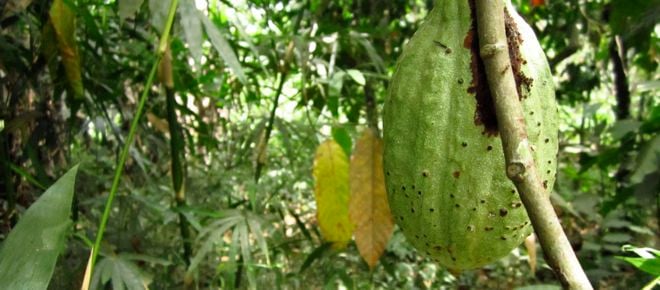Ghana’s advantage: An agriculture board?
The African country may soon reconquer the title of world’s cocoa king
Share

It’s been over 30 years since Ghana was the world’s reigning king of cocoa, the throne long since usurped by West African neighbour Ivory Coast. But because of a series of policies by the Ghana Cocoa Board, production exploded in 2011, reaching a record one million metric tonnes. That number translated into US $1.7 billion in government revenues last year, up nearly 30 per cent from a record of US $1.2 billion in fiscal 2004.
Recent oil discoveries are fuelling an economic boom, but they haven’t stirred the government’s focus away from cocoa, one of the country’s traditional commodity exports, along with gold. According to official estimates, cocoa production grew by 14 per cent in 2011, compared to two per cent growth for the overall agricultural sector. President John Atta Mills’ administration chalks the boom up to the Cocoa Board policy package, which included subsidized fertilizers, farm rehabilitation, and timely payment of remuneration and bonuses for farmers.
“[Ghana] has the potential of being number one,” says Elizabeth Gyamfi, associate statistician with the International Cocoa Organization.
There are more perks for cocoa producers in store: Along with a pest control program, as well as repair and tar roads into major production areas, the Cocoa Board plans to supply 20 million free seeds to farmers over the next six years. Government also pledged to review a housing scheme and provide additional building materials for some of the country’s cocoa farmers.
Despite the government’s enthusiasm for returning Ghana to the number one spot among cocoa producers, however, the move initially helped send cocoa prices off a cliff. “Demand has been growing quite slowly in Europe,” says Haroon Akram-Lodhi, professor of international development at Trent University. In the fourth quarter of 2011, he notes, bean-grinding edged up by a mere 1.8 per cent, signalling a cooling down in chocolate production. The glut of crop from Ghana, coupled with a huge haul from Ivory Coast, which managed to dump 1.5 million M/T of cocoa on the market despite its political crisis, was largely seen as the cause for a 34 per cent drop in prices in 2011. According to the ICO, prices plunged from around US $3,500 per tonne in January of last year to US $2,300 in December.
This year, however, looks different. While demand for chocolate may be falling in Western markets, Trent University’s Akram-Lodhi sees an increase in the world’s emerging economies. Prices in London have been rising throughout January 2012, as much as 16 per cent so far, according to Bloomberg. Meanwhile, the annual harmattan season–when trade winds kick up Saharan sand and blow it across the region–is particularly dry this year and expected to ravage crop yields in both Ghana and Ivory Coast, further driving up prices.
And it’s Ghana that stands to profit from the increase, mainly because Cote D’Ivoire, which has endured almost ten years of hot and cold war, is unable to effectively get its yield to port. The country is in the midst of developing its own cocoa board in the hopes of jumping that and other sector hurdles. As ICCO’s Gyamfi put it: “You can never go wrong with having a well established institution taking care of just a single product.”